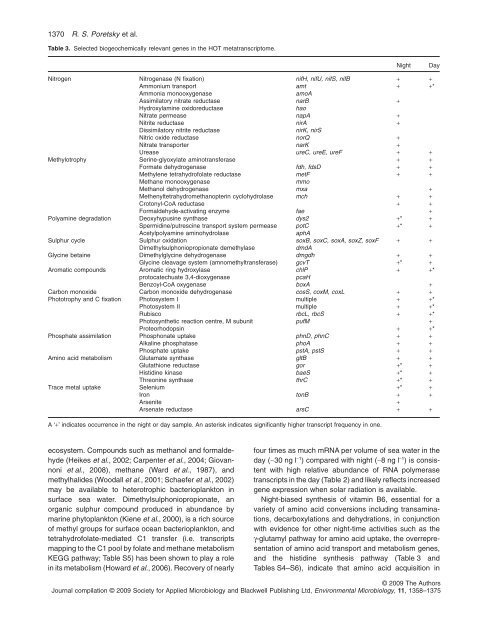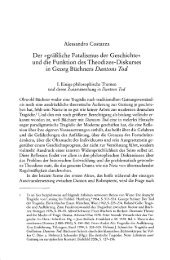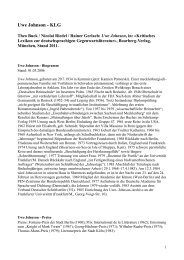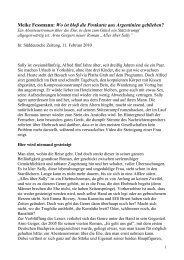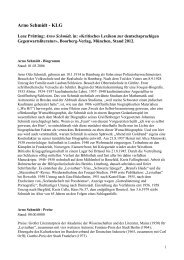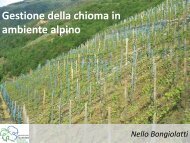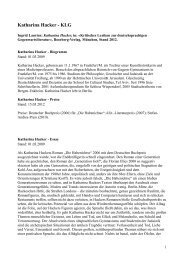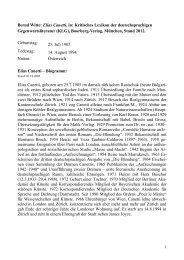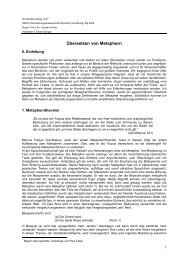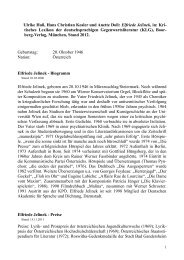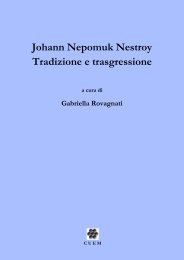Comparative day/night metatranscriptomic analysis of microbial ...
Comparative day/night metatranscriptomic analysis of microbial ...
Comparative day/night metatranscriptomic analysis of microbial ...
Create successful ePaper yourself
Turn your PDF publications into a flip-book with our unique Google optimized e-Paper software.
1370 R. S. Poretsky et al.<br />
Table 3. Selected biogeochemically relevant genes in the HOT metatranscriptome.<br />
ecosystem. Compounds such as methanol and formaldehyde<br />
(Heikes et al., 2002; Carpenter et al., 2004; Giovannoni<br />
et al., 2008), methane (Ward et al., 1987), and<br />
methylhalides (Woodall et al., 2001; Schaefer et al., 2002)<br />
may be available to heterotrophic bacterioplankton in<br />
surface sea water. Dimethylsulphoniopropionate, an<br />
organic sulphur compound produced in abundance by<br />
marine phytoplankton (Kiene et al., 2000), is a rich source<br />
<strong>of</strong> methyl groups for surface ocean bacterioplankton, and<br />
tetrahydr<strong>of</strong>olate-mediated C1 transfer (i.e. transcripts<br />
mapping to the C1 pool by folate and methane metabolism<br />
KEGG pathway; Table S5) has been shown to play a role<br />
in its metabolism (Howard et al., 2006). Recovery <strong>of</strong> nearly<br />
Night Day<br />
Nitrogen Nitrogenase (N fixation) nifH, nifU, nifS, nifB + +<br />
Ammonium transport amt + +*<br />
Ammonia monooxygenase amoA<br />
Assimilatory nitrate reductase narB +<br />
Hydroxylamine oxidoreductase hao<br />
Nitrate permease napA +<br />
Nitrite reductase nirA +<br />
Dissimilatory nitrite reductase nirK, nirS<br />
Nitric oxide reductase norQ +<br />
Nitrate transporter narK +<br />
Urease ureC, ureE, ureF + +<br />
Methylotrophy Serine-glyoxylate aminotransferase + +<br />
Formate dehydrogenase fdh, fdsD + +<br />
Methylene tetrahydr<strong>of</strong>olate reductase metF + +<br />
Methane monooxygenase mmo<br />
Methanol dehydrogenase mxa +<br />
Methenyltetrahydromethanopterin cyclohydrolase mch + +<br />
Crotonyl-CoA reductase + +<br />
Formaldehyde-activating enzyme fae +<br />
Polyamine degradation Deoxyhypusine synthase dys2 +* +<br />
Spermidine/putrescine transport system permease potC +* +<br />
Acetylpolyamine aminohydrolase aphA<br />
Sulphur cycle Sulphur oxidation soxB, soxC, soxA, soxZ, soxF + +<br />
Dimethylsulphoniopropionate demethylase dmdA<br />
Glycine betaine Dimethylglycine dehydrogenase dmgdh + +<br />
Glycine cleavage system (amnomethyltransferase) gcvT +* +<br />
Aromatic compounds Aromatic ring hydroxylase chlP + +*<br />
protocatechuate 3,4-dioxygenase pcaH<br />
Benzoyl-CoA oxygenase boxA +<br />
Carbon monoxide Carbon monoxide dehydrogenase cosS, coxM, coxL + +<br />
Phototrophy and C fixation Photosystem I multiple + +*<br />
Photosystem II multiple + +*<br />
Rubisco rbcL, rbcS + +*<br />
Photosynthetic reaction centre, M subunit pufM +<br />
Proteorhodopsin + +*<br />
Phosphate assimilation Phosphonate uptake phnD, phnC + +<br />
Alkaline phosphatase phoA + +<br />
Phosphate uptake pstA, pstS + +<br />
Amino acid metabolism Glutamate synthase gltB + +<br />
Glutathione reductase gor +* +<br />
Histidine kinase baeS +* +<br />
Threonine synthase thrC +* +<br />
Trace metal uptake Selenium +* +<br />
Iron tonB + +<br />
Arsenite +<br />
Arsenate reductase arsC + +<br />
A‘+’ indicates occurrence in the <strong>night</strong> or <strong>day</strong> sample. An asterisk indicates significantly higher transcript frequency in one.<br />
four times as much mRNA per volume <strong>of</strong> sea water in the<br />
<strong>day</strong> (~30 ng l -1 ) compared with <strong>night</strong> (~8 ngl -1 ) is consistent<br />
with high relative abundance <strong>of</strong> RNA polymerase<br />
transcripts in the <strong>day</strong> (Table 2) and likely reflects increased<br />
gene expression when solar radiation is available.<br />
Night-biased synthesis <strong>of</strong> vitamin B6, essential for a<br />
variety <strong>of</strong> amino acid conversions including transaminations,<br />
decarboxylations and dehydrations, in conjunction<br />
with evidence for other <strong>night</strong>-time activities such as the<br />
g-glutamyl pathway for amino acid uptake, the overrepresentation<br />
<strong>of</strong> amino acid transport and metabolism genes,<br />
and the histidine synthesis pathway (Table 3 and<br />
Tables S4–S6), indicate that amino acid acquisition in<br />
© 2009 The Authors<br />
Journal compilation © 2009 Society for Applied Microbiology and Blackwell Publishing Ltd, Environmental Microbiology, 11, 1358–1375


